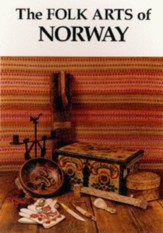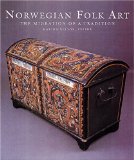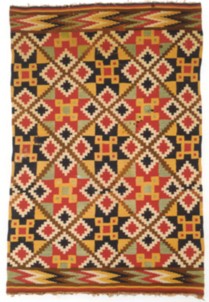|
Norwegian Folk ArtThe Folk Arts of Norway The isolated valleys and scattered farms of Norway harbor a folk art tradition that is among the richest in the world. There the arts of painted floral decoration, woodcarving, metalworking, weaving, embroidery and costume-making have been developed over the centuries, and are still being practiced today.

Norwegian Folk Arts Following up on the original 1953 University of Wisconsin Press edition and the 1972 Dover Publications reissue, this updated volume includes new information on north Norway and on the Sami (the people formerly known as Lapps). As in previous editions, chapters detail the Norwegian folk arts of carving, rosemaling, metalwork, weaving, and embroidery, offering historical origins and discussing regional variations. The Woven Coverlets of Norway (below) showcases one of Norway's most beautiful and enduring folk arts.
Coverlets were a central feature in the important ceremonies of a person's life as well, wrapping an infant at christening, providing a cover for the marriage bed, and draping the coffin as a last offering of comfort to a loved one. To explain the coverlet's importance as the pinnacle of the Norwegian weaver's art, Katherine Larson looks at the role textiles played in the lives of women prior to the twentieth century. She takes readers through the yearly cycle in rural Norway and relates it to the many steps of cloth production in a pre-industrial era. Larson describes traditional methods of preparing, spinning, dyeing, and weaving wool and flax, and the tools with which these tasks were performed. She devotes chapters to the different types of coverlets and their origins: tapestry, square weave, krokbragd, double weave, rya, and overshot. Numerous illustrations show patterns from ages past faithfully preserved in the coverlets of Norway. In addition, the book includes a wealth of bibliographic sources and a glossary of weaving terminology The book will appeal to anyone who owns or has ever admired an antique coverlet, and especially to Scandinavian Americans who are interested in their cultural heritage. The historical aspects will be important to textile studies, women's studies, and art history.
Traditional Weaving Norwegian Folk Art - wowen coverlets of Norway 
|

